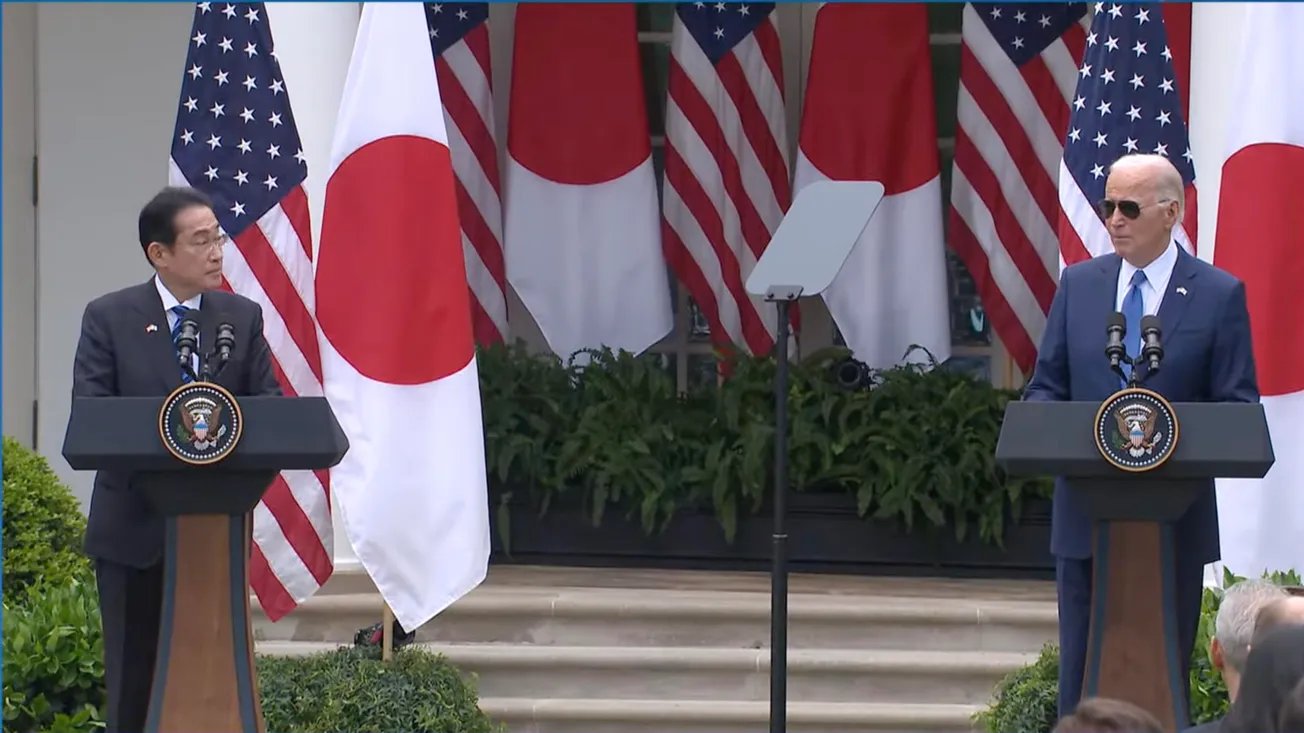April 11, 2024 (EIRNS)—The joint statement by the U.S. and Japan, issued following the meeting of President Joe Biden and Prime Minister Fumio Kishida at the White House yesterday, which drew a stern response from China today, was a long, nauseating diatribe on why the U.S. and Japan are building up their military cooperation to counter China’s evil and aggressive threat to “freedom and democracy.” Under the subtitle “Global Partners for the Future,” the opening paragraph states that the two leaders “pledge that the United States and Japan will continue our tireless work, together and with other partners, to realize a free and open Indo-Pacific and world.”
The de facto intent is to integrate Japan into NATO—clearly it is no longer a Pacific nation!—through their agreement to achieve “seamless integration of operations and capabilities … greater interoperability and planning between U.S. and Japanese forces in peacetime and during contingencies.”
The fact that the target is China is not subtle, as China is charged with efforts “to unilaterally change the status quo by force or coercion in the East China Sea,” “with unsafe encounters at sea and in the air as well as the militarization of disputed features and the dangerous use of coast guard vessels and maritime militia”; with “recent dangerous and escalatory behavior supporting its unlawful maritime claims in the South China Sea as well as efforts to disrupt other countries’ offshore resource exploitation,” which, they claim, “are inconsistent with international law as reflected in UNCLOS,” United Nations Convention on the Law of the Sea treaty—which the U.S. has never signed.
The “core” of the tightened U.S.-Japanese “global partnership” they describe is resurgent Japanese militarism, “seamlessly” linked to that of the U.S. The commitments cited include cooperation on building “high-end base capabilities,” and developing “Japan’s suite of counterstrike capabilities'’ (the Tomahawk Land Attack Missile [TLAM] system is named). Joint work on anti-hypersonic-missile defense, and co-development and production of missiles are on the agenda.
Add to that, establishing “a networked air defense architecture” among the U.S., Japan, and Australia, and possibly bringing Japan into the AUKUS military alliance (Australia, the U.K., and U.S.), by its participation in the AUKUS “Pillar II advanced capability projects.” Trilateral Australian, U.S., and Japanese cooperation “in the rapidly emerging field of collaborative combat aircraft and autonomy” is being “explored.” And on and on.
As for Taiwan, it must be remembered that the Japanese colonized Taiwan for 50 years, from 1895-1945, only relinquishing it, after to their defeat in World War II, and that the U.S. treats Taiwan as a semi-colony and is openly preparing it to go to war with the Chinese mainland. In that context, the two leaders “reiterate the importance of maintaining peace and stability across the Taiwan Strait as an indispensable element of global security and prosperity.”





